What’s Trending in Aerospace – April 4, 2021
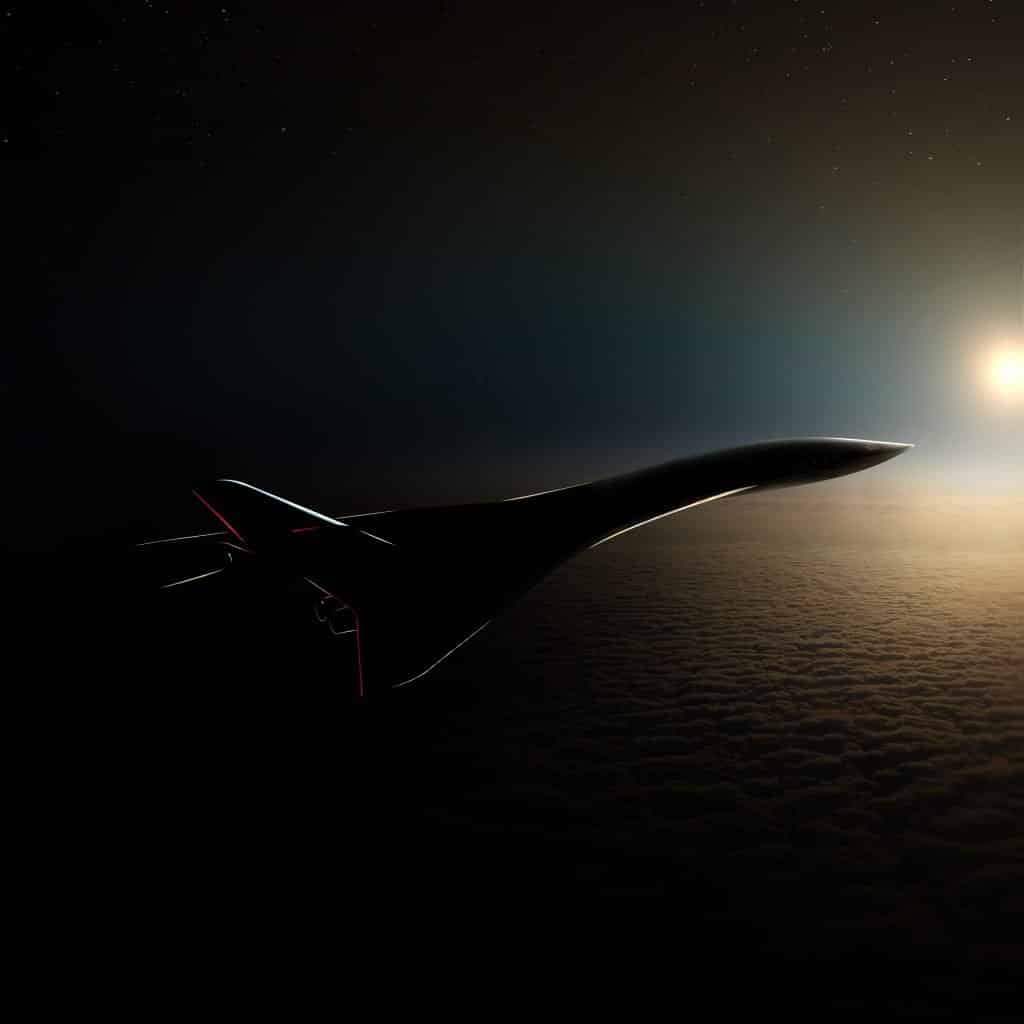
Check out the April 4 edition of What’s Trending in Aerospace, where editors and contributors for Avionics International bring you some of the latest headlines and updates happening across the global aerospace industry.
Commercial
Southwest Airlines Orders 100 Boeing 737 MAX Jets
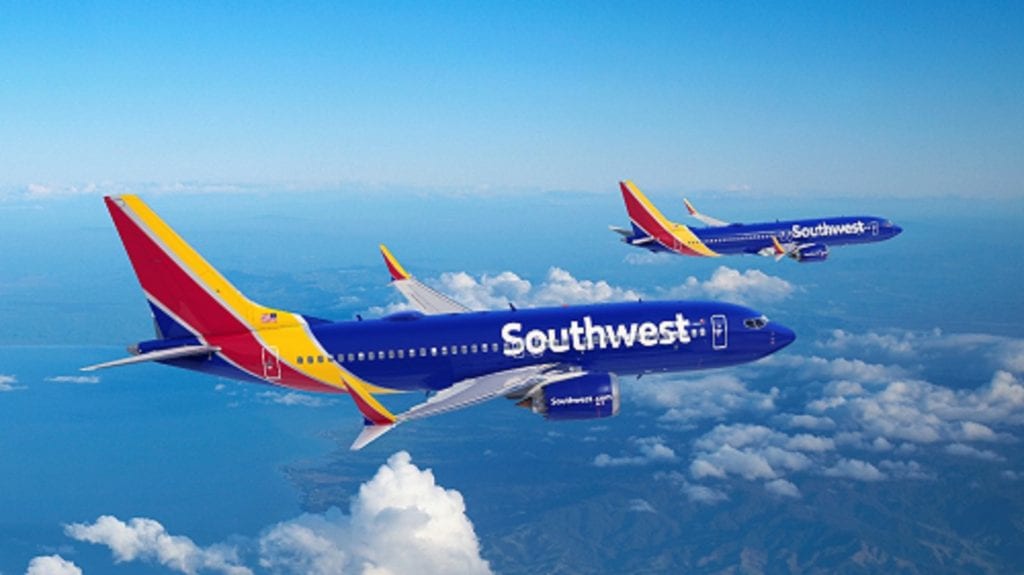
Southwest Airlines has placed a new order for 100 total Boeing 737 MAX jets. (Boeing)
Boeing and Southwest Airlines reached a new purchase agreement around the 737 MAX family with an order for 100 airplanes and 155 options across two models, according to a March 29 press release. The deal comes after a multi-year fleet evaluation by Southwest and means that Boeing and its suppliers could build more than 600 new 737 MAX jets for the airline through 2031.
Southwest had been exploring options to modernize the largest component of its fleet: the 737-700 that serves the airline’s needs for a 140-150 seat airplane.
“Southwest Airlines has been operating the Boeing 737 series for nearly 50 years, and the aircraft has made significant contributions to our unparalleled success. Today’s commitment to the 737 MAX solidifies our continued appreciation for the aircraft and confirms our plans to offer the Boeing 737 series of aircraft to our Employees and Customers for years to come,” Gary Kelly, Southwest’s chairman and CEO, said in the release. “We are proud to continue our tradition of being the world’s largest operator of an all-Boeing fleet.”
The new purchase agreement takes Southwest’s order book to 200 737-7s and 180 737-8s, more than 30 of which have already been delivered. Southwest will also have 270 options for either of the two models, taking the carrier’s direct-buy commitment to more than 600 airplanes. The airline also plans additional 737 MAX jets through third-party lessors.
Alaska Airlines Finalizes Order for 23 New Boeing 737 MAX Jets
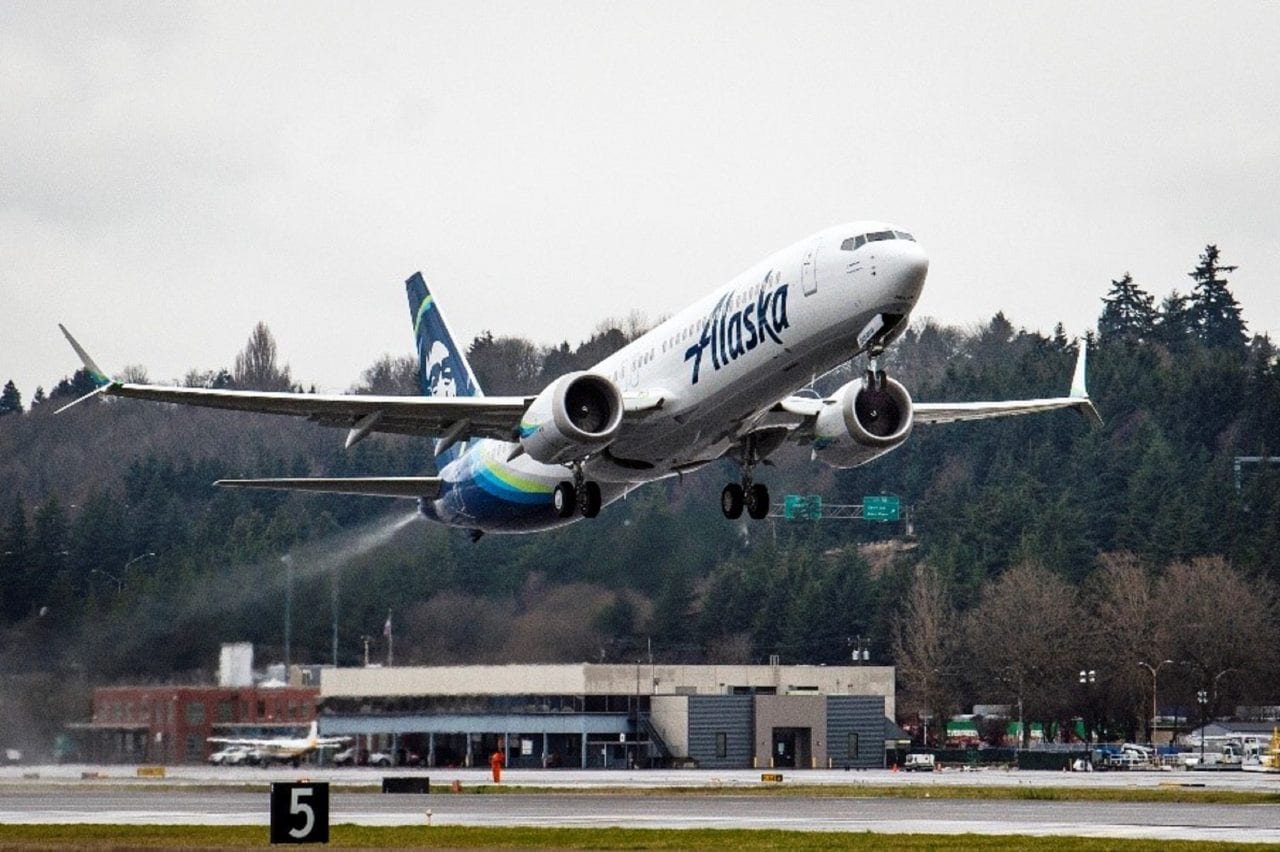
An Alaska 737-9 departs Boeing Field. (Boeing)
In a deal first announced in December, Alaska Airlines has completed a purchase agreement to acquire 23 new Boeing 737-900 aircraft, with 15 options.
With this agreement, the carrier’s 737 MAX order book, including options and lease commitments, stands at 120 airplanes, according to a March 30 press release.
“Alaska Airlines received its first 737-9 in January and began revenue service on March 1. Its second 737-9 entered service on March 18, with two additional 737-9s scheduled to begin revenue service next week,” Boeing said in the release.
Frontier Airlines Announces Pricing for Initial Public Offering
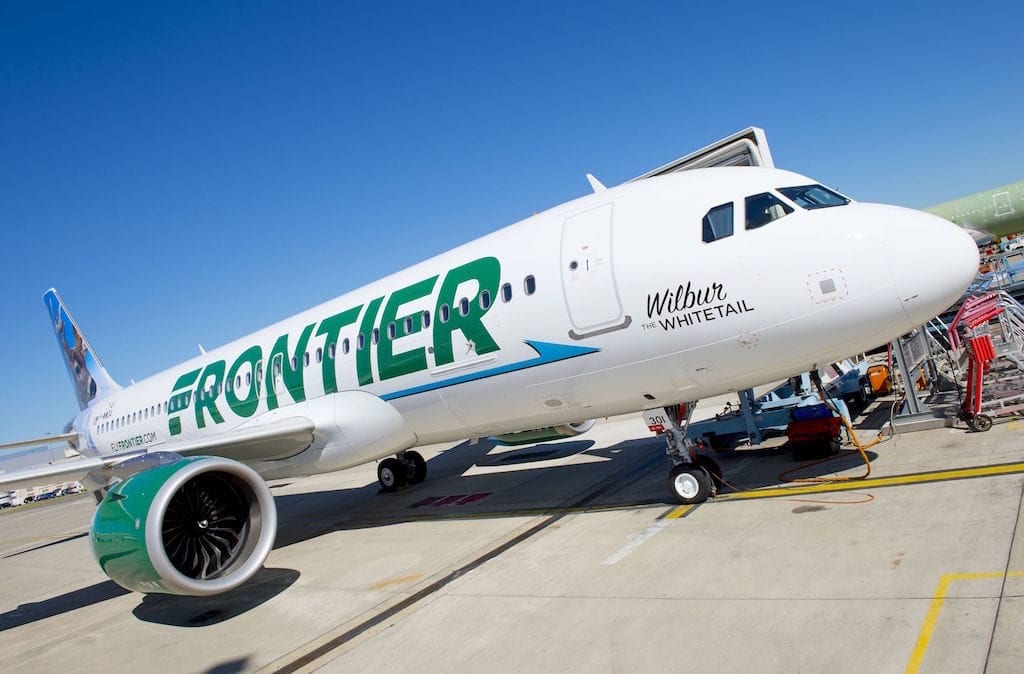
Frontier Airlines operates an all-Airbus fleet, including this A320neo. (Frontier Airlines)
In a March 31 press release, Colorado-based low cost carrier Frontier Airlines announced the pricing of its initial public offering of 30 million shares of its common stock at a price to the public of $19.00 per share.
“The offering consists of 15 million shares of common stock offered by Frontier and 15 million shares of common stock to be sold by certain of Frontier’s existing stockholders,” Frontier said in the release. “A selling stockholder has granted the underwriters a 30-day option to buy an additional 4.5 million shares of common stock from such selling stockholder at the initial public offering price, less the underwriting discount and commissions. Frontier will receive net proceeds of approximately $266 million after deducting the underwriting discount and commissions and estimated offering expenses.”
Frontier is the second U.S.-based budget carrier to go public this year, after Sun Country Airlines finished their IPO on March 16. In a securities filing, Frontier said it believed that it could lure millions of passengers over the coming decade, according to an April 1 article featuring an interview with Frontier CEO Barry Biffle published by The New York Times.
Air Canada Reaches Agreement to Terminate Acquisition of Transat
Air Canada’s acquisition of Transat A.T. Inc., the Montreal-based holiday tourism company, has been terminated under a new agreement “mutually” reached between the two carriers, according to an April 2 press release.
Air Canada and Transat had originally agreed in June 2019 on the acquisition, the terms of which were subsequently amended in August 2019 and then revised in October 2020 as a result of the severe economic impact of the COVID-19 pandemic.
“As previously disclosed, the acquisition was conditional on the approval of various regulatory authorities, including the European Commission (EC),” Air Canada said in the release. “In order to meet that key condition, Air Canada offered and enhanced a significant package of remedies, which went beyond the commercially reasonable efforts required of Air Canada under the Arrangement Agreement and what has been traditionally accepted by the EC in previous airline merger cases. Following recent discussions with the EC, it has become evident, however, that the EC will not approve the acquisition based on the currently offered remedy package.”
Military
US Air Force Completes First Military Transport of eVTOL Aircraft Inside C-130
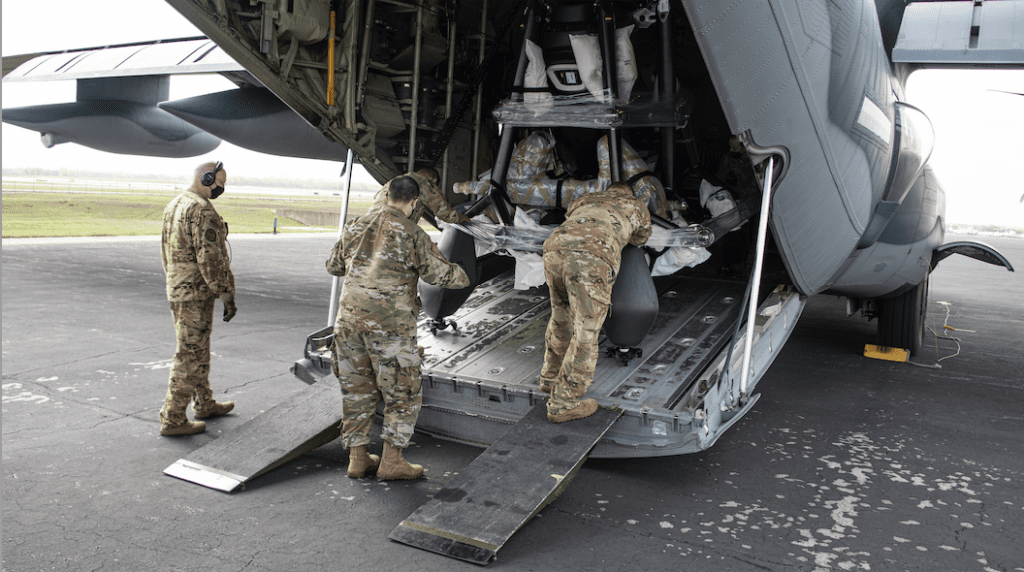
Airmen offload a LIFT Aircraft electronic vertical takeoff and landing aircraft from an HC-130J Combat King II at Austin-Bergstrom International Airport, Texas, March 24, 2021. This transportation test provided 79th Rescue Squadron Airmen a better understanding of how eVTOL vehicles can potentially integrate into military capabilities in the future. (U.S. Air Force photo by Senior Airman Jacob T. Stephens)
The U.S. Air Force transported an electric vertical take-off and landing (eVTOL) aircraft from Springfield, Ohio to Austin, Texas on March 23 and 24 inside an HC-130J Combat King II as a proof of concept to integrate eVTOLs into combat capabilities, according to the 355th Wing.
The eVTOL used was LIFT Aircraft’s Hexa which performed its first demonstration flight for the Air Force in August 2020.
“This is the first milestone in developmental operations of eVTOL in rescue and attack, which highlights how the wing continues to actively engage on the front end of these efforts to continue building our readiness for tomorrow’s fight,” U.S. Air Force Maj. Brendan Gallagher, 563rd Rescue Group chief of weapons and tactics, said in a statement. “By doing this, we are furthering the rescue and attack capabilities as we look toward the future, because these are the next generation of flying platforms.”
The 355th Wing, 621st Contingency Response Wing, and other units are looking to use these aircraft in personnel recovery, initial airfield assessment missions, and resupply missions, according to the Air Force.
AFSOC A-29 Super Tucano Takes Step Closer to Delivery

The second of three A-29 Super Tucano aircraft reached another step closer to production. (SNC)
The second of three A-29 Super Tucano aircraft for the Combat Aviation Advisor (CAA) mission for the Air Force Special Operations Command (AFSOC) landed Code 1, marking another step closer to production, according to a March 29 press release.
Sierra Nevada Corporation (SNC) is the prime contractor and is partnering with Embraer Defense & Security are producing the aircraft. The companies are also providing ground support equipment, pilot training, contractor logistics support, spares, and sustainment for the CAA mission, according to the release.
All three aircraft will be delivered this year with the other activities continuing through 2024.
CT-114 Tutor Aircraft Accident Result of Bird in Engine
The accident of a CT-114 Tutor aircraft in the 431 Squadron was caused by a single bird entering the engine following take off, the Royal Canadian Air Force’s Directorate of Flight Safety concluded in a new report. The accident occurred on May 17, 2020 and resulted in the death of Captain Jenn Casey and injury to Captain Richard MacDougall.
The pilot and passenger were forced to eject from the aircraft when it stalled. The engine stall was linked to the bird entering the engine and causing a compress stall and loss of thrust, according to a March 29 release. The pilot attempted to climb straight following the loss of thrust resulting in an aerodynamic stall.
The ejections occurred at low altitudes and unsafe conditions which did not allow time for the parachutes to function properly, according to the release.
The report states that aircrews need additional training to better prepared for engine failure after take-off in low-level environments.
“Snowbird 11’s power loss could not have come at a worse time – low altitude, low airspeed, proximity to another aircraft, and in the vicinity of a built-up area,” Colonel John Alexander, Director of Flight Safety, Royal Canadian Air Force, said in a statement. “This tragic accident reinforces the importance of continuous, situation-specific training to minimize reaction time in an emergency and the importance of a timely decision to eject.”
Japanese Coast Guard Get Two New H225 Helicopters
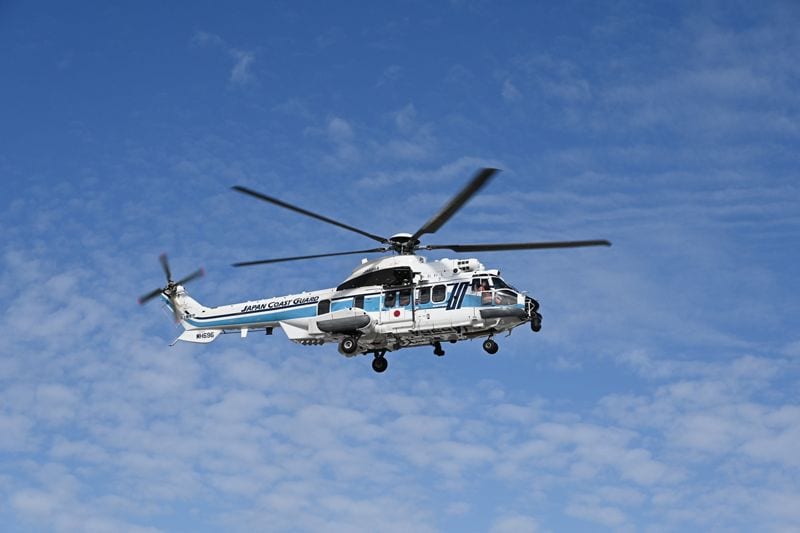
Japanese Coast Guard expands its fleet of H225 helicopters. (Airbus)
The Japanese Coast Guard has expanded its fleet of Super Puma helicopters to equal 17 with the addition of two new H225 helicopters, according to a March 30 press release.
“From the first Super Puma delivery nearly 30 years ago to the latest H225 orders, we greatly appreciate Japan Coast Guard’s continued trust in our products and services,” Guillaume Leprince, managing director of Airbus Helicopters in Japan, said in a statement. “This repeat H225 order reinforces the aircraft’s position as a reference in SAR operations and security enforcement. We are proud of how the deployment of the agency’s fleet has ensured mission success throughout the years. Airbus will continue to ensure the fleet’s high availability, in support of the agency’s safe operations.”
The Japanese Coast Guard now has a total of 15 H225s that support territorial coastal activities, security enforcement, and disaster relief missions, according to the release.
Navy Orders 11 More P-8A Aircraft
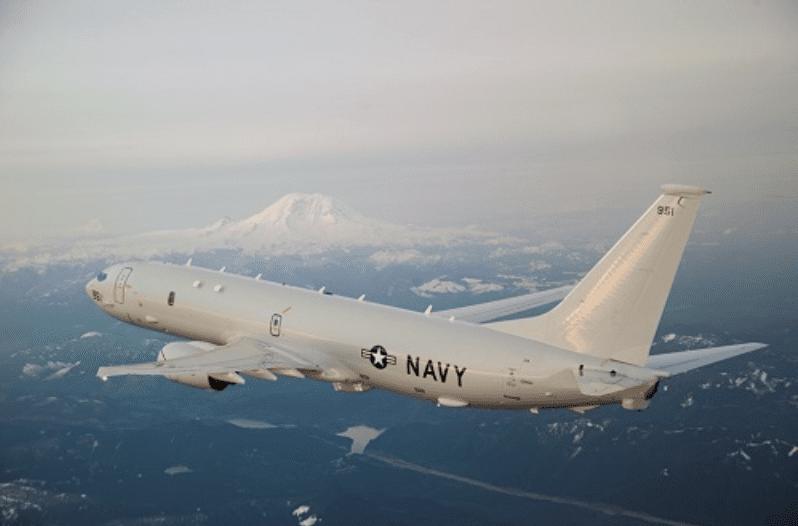
The U.S. Navy now has 128 P-8A aircraft under contract. (Boeing)
Boeing received a contract for 11 P-8A Poseidon aircraft from the U.S. Navy worth $1.6 billion, according to a March 31 release. The U.S. Navy will keep nine of the 11 aircraft and two will go to the Royal Australian Air Force (FAAF) under a partnership program.
“The P-8A continues to be an invaluable asset and these additional aircraft will help deliver expanded maritime patrol and reconnaissance capabilities to the fleet,” Capt. Eric Gardner, program manager for the U.S. Navy’s Maritime Patrol and Reconnaissance Program Office, said in a statement.
The P-8A is used for intelligence gathering, surveillance reconnaissance, and search and rescue. The U.S. Navy now has 128 P-8A aircraft under contract, according to the release.
“We continue to hear feedback from deployed Navy squadrons who tell us the P-8A is exceeding expectations,” Stu Voboril, vice president and program manager for Boeing’s P-8A program, said in a statement. “Our focus is on delivering the world’s best maritime patrol aircraft. That only happens when teams truly collaborate, listen and focus on customer priorities.”
Connectivity
Former SmartSky Networks CCO Among New Executives Joining Global Eagle Leadership Team
Global Eagle has announced the addition of four new executives to its leadership team, including former SmartSky Networks Chief Commercial Officer Nancy Walker, according to a March 29 press release.
Kate Santoro has been appointed the new Vice President, Legal & General Counsel, and Hope Groves as Vice President, Content Technology. Additionally, Estibaliz Asiain has been promoted to Senior Vice President, Commercial – Media & Content.
The new executive appointments come as the company emerges from a 2020 Chapter 11 Bankruptcy filing.
“In this exciting time for our company, I’m pleased to welcome three talented new team members and make a well-deserved promotion, as we build our teams across Media & Content and Connectivity,” Global Eagle Chief Executive Officer Josh Marks, said in the release. “We are refreshing our leadership team to support our customers and lead our global workforce.”
Business & GA
Aerion Launches Mach 4+ Commercial Airliner AS3

Aerion revealed its first glimpse of the AS3 Mach 4+ jet, stating that it will take to the skies “before the end of the decade.”
Aerion, the Reno, Nevada-based supersonic business jet manufacturer, released new details and a video on the AS3, a Mach 4+ commercial airliner capable of flying from Los Angeles to Tokyo in less than three hours.
In the release, Aerion notes that it is projecting the AS3 to “take to the skies before the end of the decade,” and will be capable of flying up to 3,000 mph. Conceptualization and design work for the AS3
Earlier this year Aerion expanded its ongoing partnership with NASA’s Langley Research Center, with the intention of accelerating the realization of commercial high-speed flight and faster point- to-point travel, specifically studying commercial flight in the Mach 3-5 range.
The AS2 supersonic business jet is projected to commence production in 2023. Aerion expects to release more details on the AS3 later this year.
ZeroAvia Secures $24.3 Million to Start Large Engine Development for 50-Seat Zero-Emission Aircraft
Silicon Valley-based startup ZeroAvia is launching the development program for a 2MW hydrogen-electric powertrain for full-size regional aircraft. The program kick-off is supported by a new raise of $24.3 million, led by Horizons Ventures, joined by a new investor British Airways, according to a March 31 press release.
Existing investors Breakthrough Energy Ventures, Ecosystem Integrity Fund, Summa Equity, Shell Ventures, and SYSTEMIQ also participated in the financing. This new round accelerates the larger hydrogen-electric engine development for the 50+ seat aircraft and supports additional commercial airlines initiatives to adopt hydrogen in aviation.
The latest round brings the company’s total private investment to over $53 million. This follows a December announcement from ZeroAvia for a funding round that included investment from a group of investors that included Amazon.
“This new funding, in conjunction with our other recent milestones, will significantly accelerate our path to zero-emission solutions for larger regional aircraft at a commercial scale,” Val Miftakhov, CEO and founder of ZeroAvia said in the release. “With many airlines lining up and ready to make the shift to zero-emissions, we expect to see wide-scale adoption of this technology.”
eVTOLs
Lilium Reveals New 7-Seater eVTOL and Merger with Qell

The 7-Seater Jet is an updated version of Lilium’s 5-Seater aircraft and carries six passengers and one pilot. (Lilium)
Lilium revealed its latest electric vertical take-off and landing (eVTOL) aircraft, the 7-Seater Lilium Jet, as a culmination of four generations of technology demonstrators, according to a March 30 press release published by the Munich, Germany-based company. Lilium will also merge with Qell Acquisition Corp. making the eVTOL maker a publicly listed company.
“We’re incredibly excited to reveal the development of our 7-Seater Lilium Jet and announce the next stage of our growth,” Daniel Wiegand, Co-Founder and CEO of Lilium, said in a statement. “This is a validation of all the hard work over the last five years from our talented team and our world-class partners and investors.”
The 7-Seater is an updated version of Lilium’s 5-Seater aircraft and carries six passengers and one pilot. It has received CRI-A01 certification from EASA and concurrent type certification with EASA and the FAA, according to the release. It has a cruise speed of 175 mph and flies at 10,000 feet with a range of 155 miles.
Unmanned
Nuuva V300 UAV Will Use Honeywell Navigation and Motion-Sensing Data Technologies
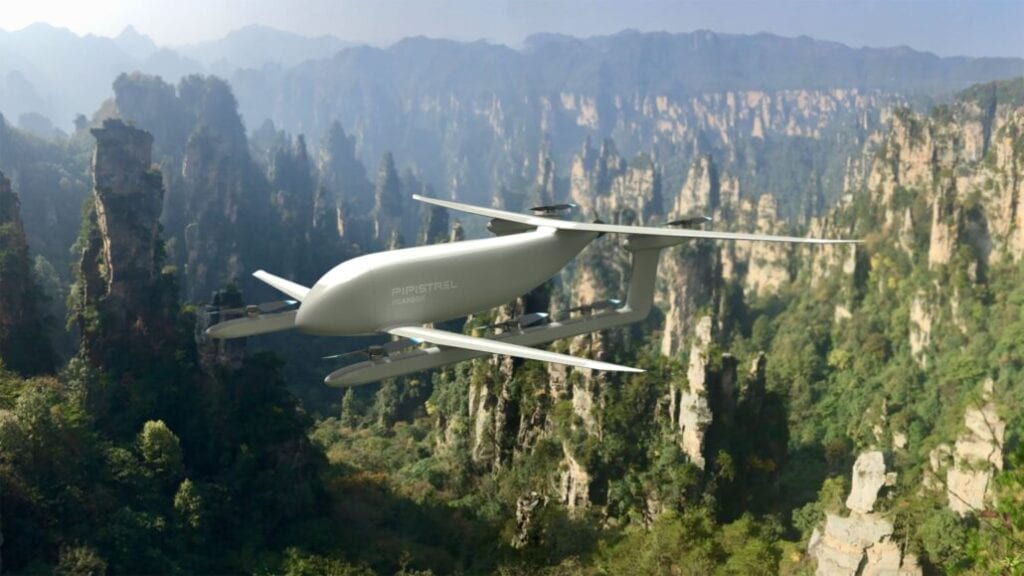
Concept art of the Nuuva V300. Image: Pipistrel
Pipistrel’s Nuuva V300 cargo unmanned aerial vehicle (UAV) will use Honeywell’s attitude heading reference system (AH-2000) and air data module (ADM) along with Honeywell’s compact fly-by-wire system, the company announced on April 1.
The AH-2000 and ADM work alongside the fly-by-wire system to supply critical motion data to all avionics systems and many mechanical systems, according to the release.
“Unmanned aircraft, especially those delivering packages, must be equipped with high-performing inertial systems to ensure fly-by-wire systems are provided the best possible information on location, speed and position,” Matt Picchetti, vice president and general manager of Navigation & Sensors at Honeywell Aerospace, said in a statement. “Vehicles like Nuuva V300 will change the way logistics companies fulfill package deliveries, and we’re proud to add our growing list of onboard technologies to enhance safety and make flying easier.”
The Nuuva V300 UAV can carry up to 460 kilograms with a range of 300 kilometers, according to the release. This UAV could be used for deliveries typically only accessible by a helicopter.
“Nuuva V300’s groundbreaking operational concept requires highly accurate, dependable and robust navigation sensors, and the AH-2000 and ADM are key enablers of this functionality,” Tine Tomažič, chief technology officer at Pipistrel, said in a statement. “This technology allows us to deliver simple and intuitive mouse-click control to fly the vehicle, eliminating the need for operators to be trained with traditional piloting skills, which helps ensure rapid scale-up of operations for our customers.”
The post What’s Trending in Aerospace – April 4, 2021 appeared first on Aviation Today.
Check FastApn access for commercial satcoms at Fastapn
Flytlink – Avionics, Satcom’s and IFE Consultants






